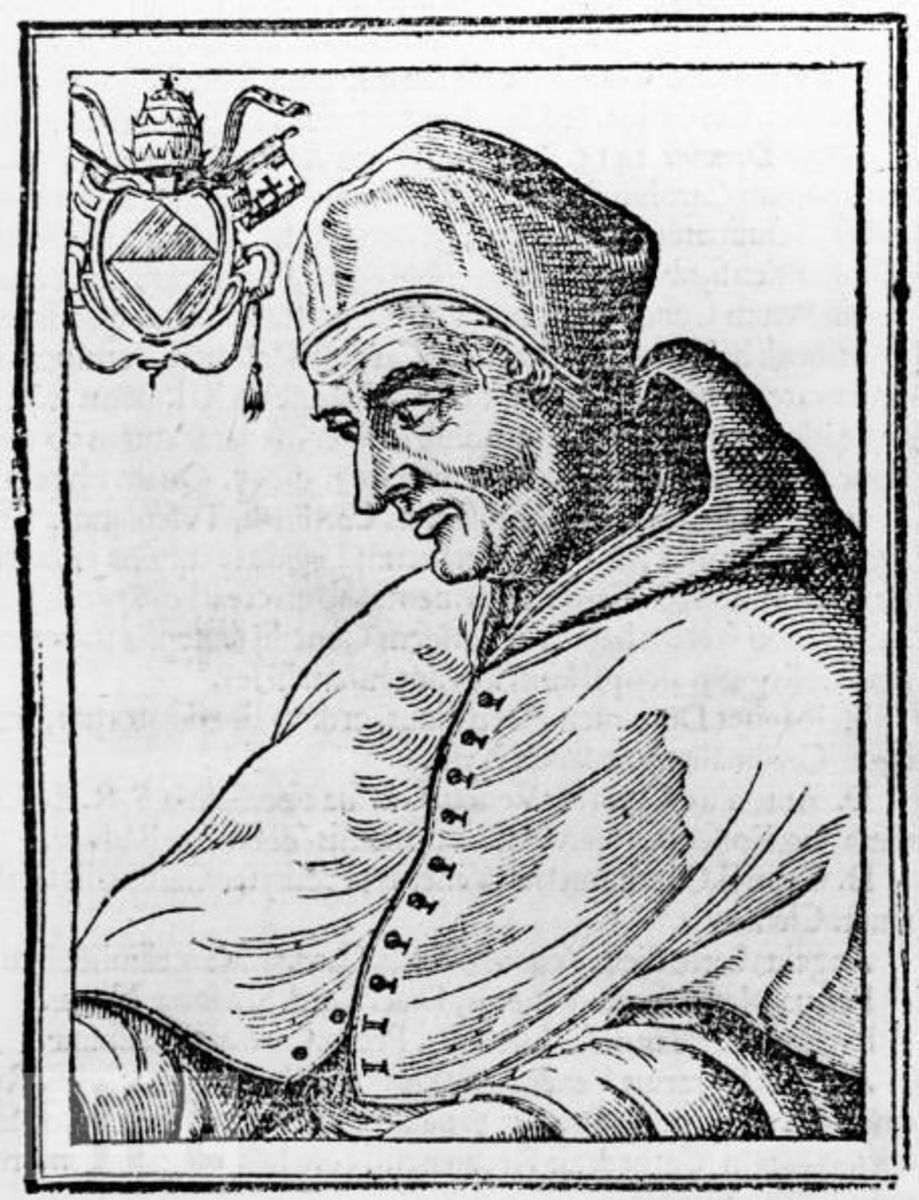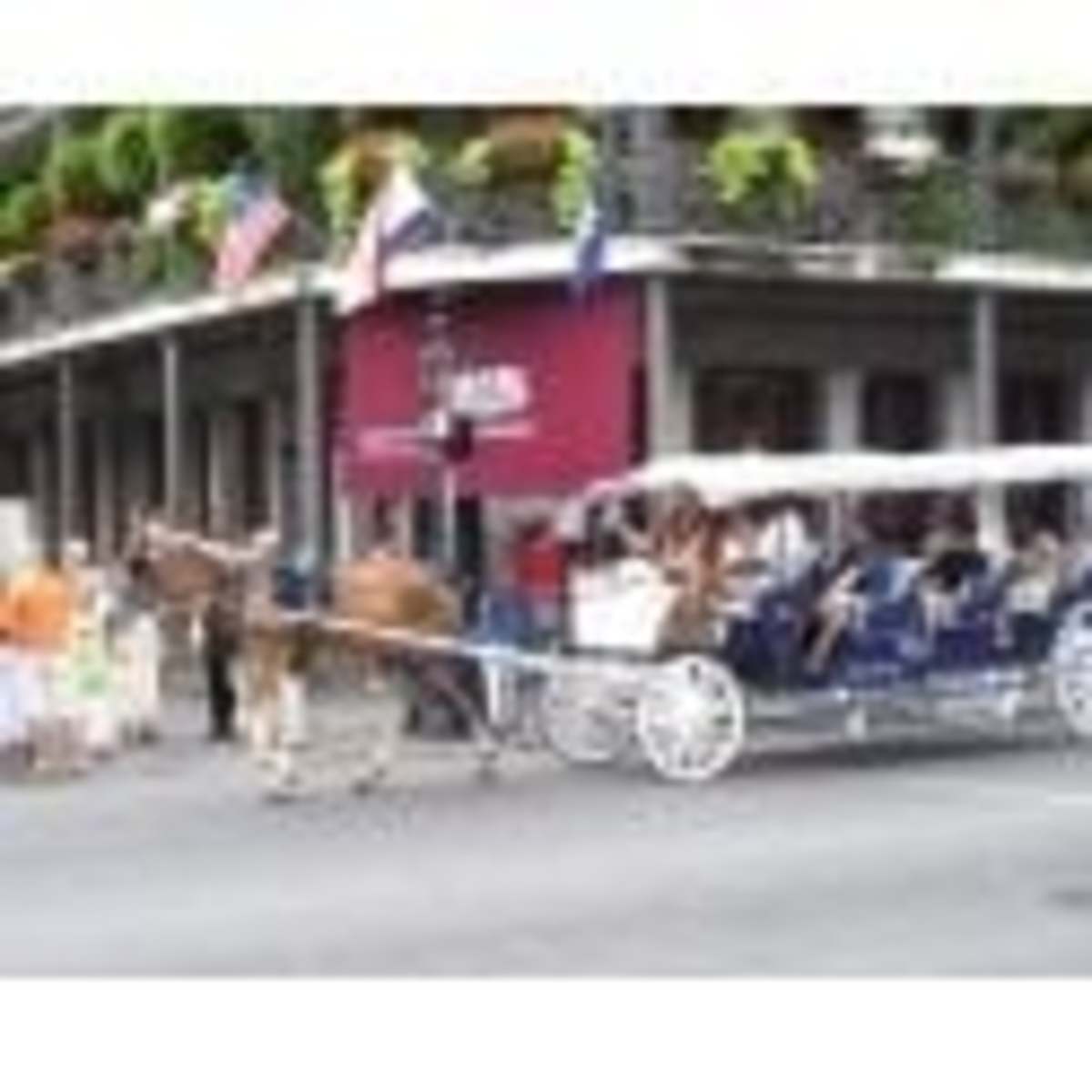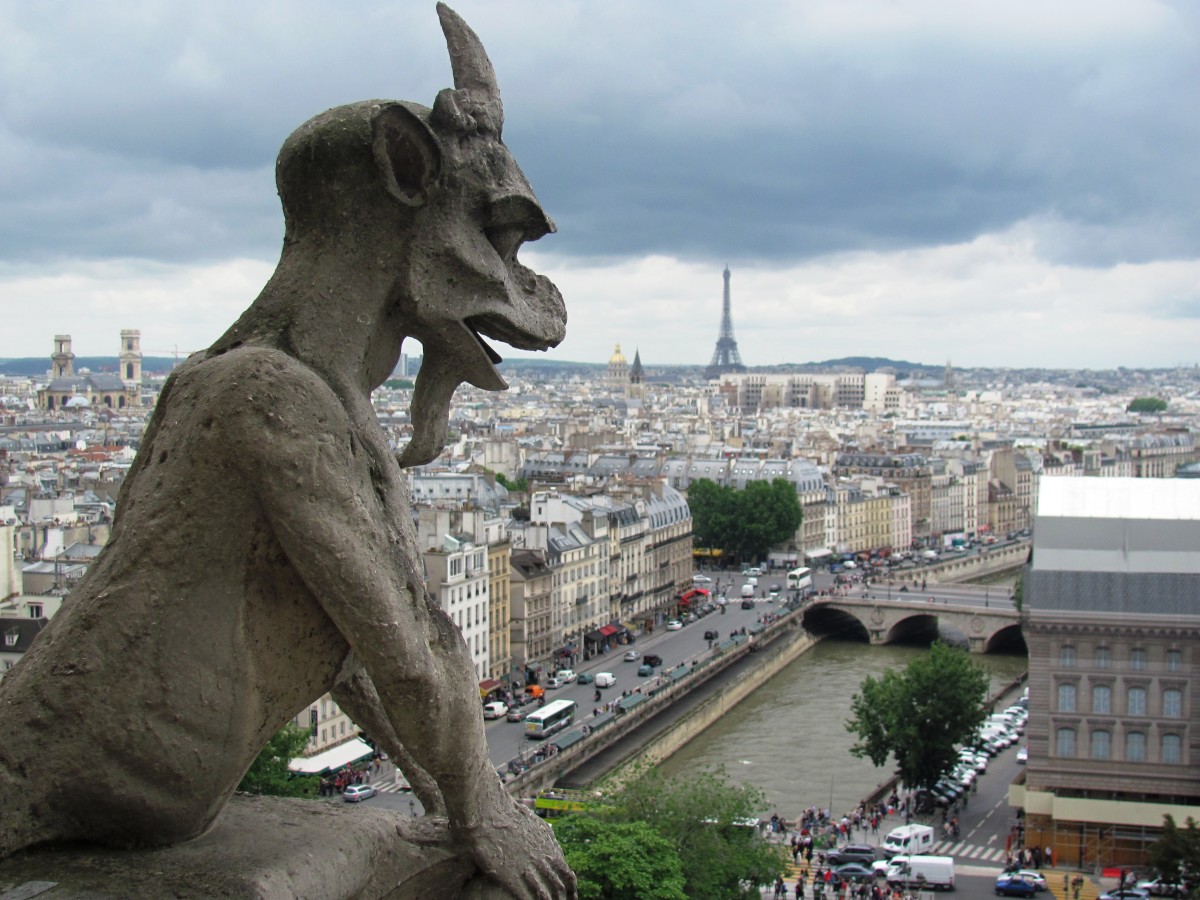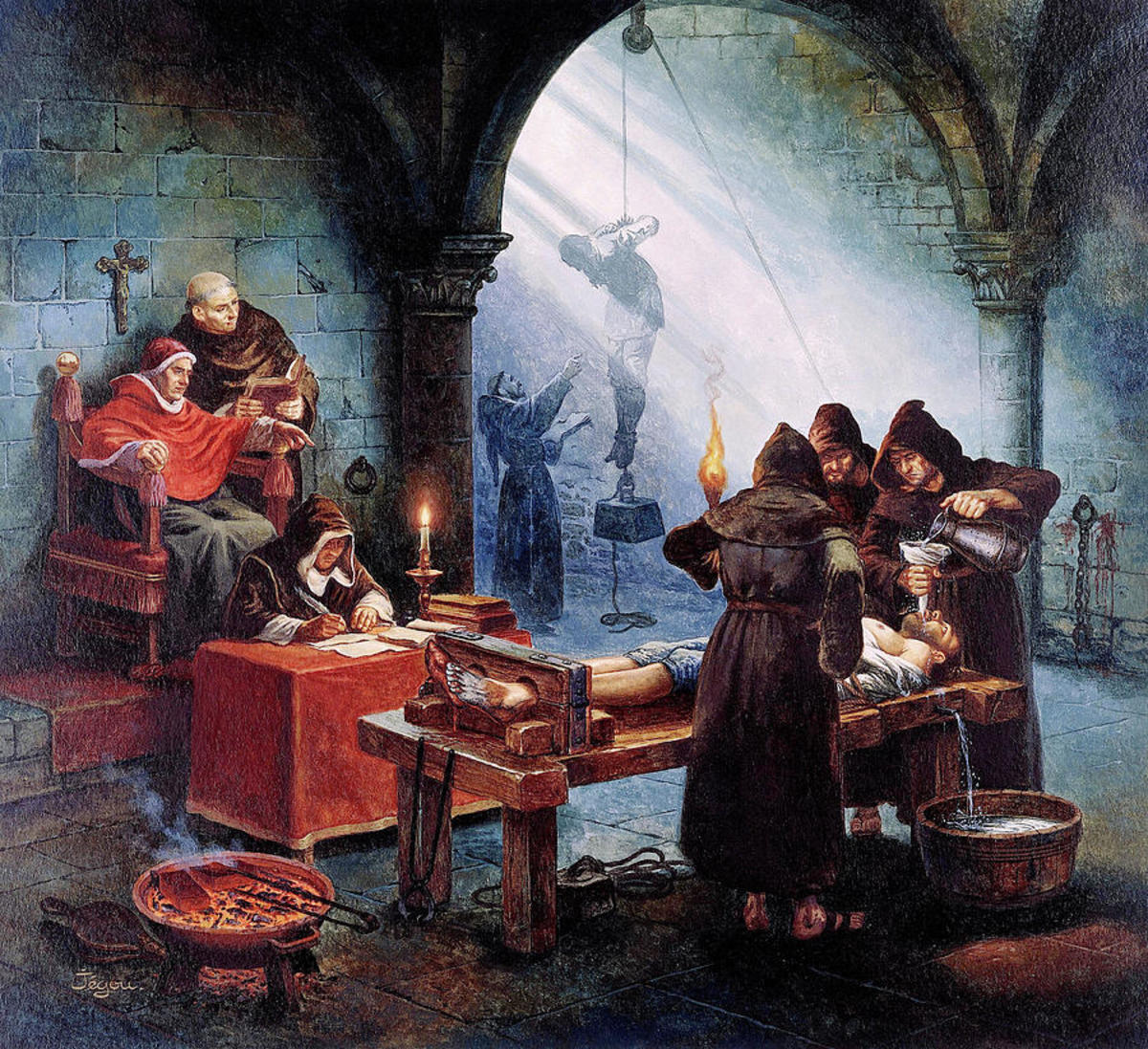- HubPages»
- Travel and Places»
- Visiting North America»
- United States»
- Louisiana
History of the French Quarter's St. Louis Cathedral
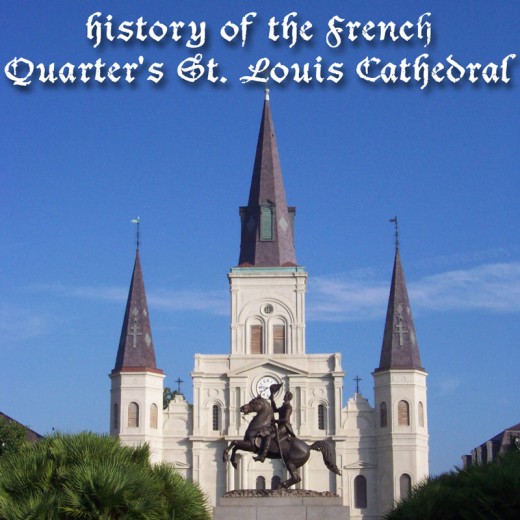
A short history of New Orleans most famous landmark
One of the most recognizable buildings in the French Quarter is St. Louis Cathedral at the head of Jackson Square.
The Cathedral sits at the head of the beautiful gardens of Jackson Square and across from the Mississippi river - it's not hard to see why the peaceful spot is a favorite of both locals and visitors.
That tranquil setting hides too much history and too many bizarre stories to all be told at once, but here's a start.
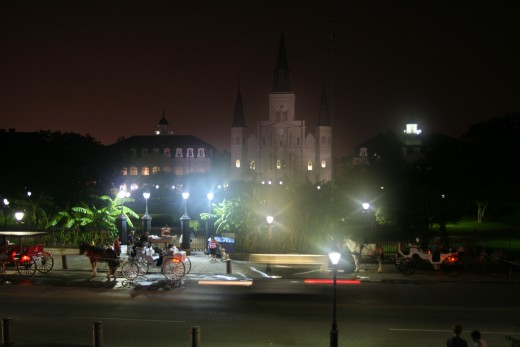
The Briefest Inquisition
In 1779, Spain held the city, much to the annoyance of the citizenry who were very happy to find themselves sold off by Napoleon to finance his war. Then again those Spaniards were a little uptight, and not very happy with their new colony either. Letters from Spanish officials sent home complain at length that the locals are lazy, indecent, and would rather eat lavishly and drink copiously than work.
Well those plucky Spaniards had a cure for that! And so they sent over Father Antonio de Sedella, "commissioner of Inquisition of Faith." He worked quietly for a year, putting into place the various instruments of the Spanish Inquisition to 'convince' the people that a life of quiet piety was much healthier for them than their current path.
When he finally told the governor what he was up to and that he was ready to start his interrogations, he was very quietly but quickly put on a ship headed back to Europe with an explanation that, as nice an idea as it was, really, we'll pass.
And that's how we became the only place in the Americas to have the Spanish Inquisition.
Almost.
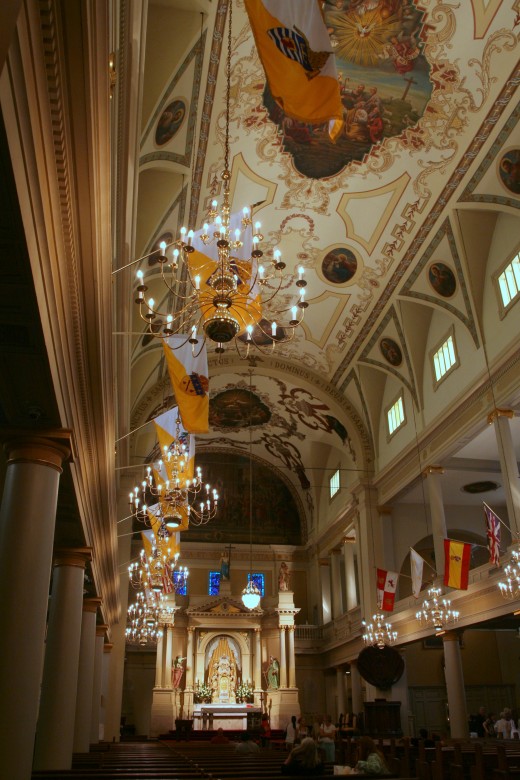
The Third Cathedral
What stands today is actually the third church in this spot.
The first was a small chapel built at the city's founding in 1699, destroyed by a hurricane in 1722. The second church, rebuilt and expanded, opened in 1727 and burned down in the Great Fire of 1788.
One of the richest people in the city, Andres Almonester y Roxas, generously declared that he would personally see the church rebuilt.
Well...sorta. Almonester was known to be a bit of an operator, so there was some skepticism. He'd come to the city a penniless immigrant 20 years before, becoming the city's Notary Public- and just one in a long line of New Orleanian public servants who'd somehow managed to serve themselves at least as much as they'd served the public.
Leonard Huber wrote in his history of the Cathedral:
For these benefactions, Almonester sought from the King of Spain "a title of Castile.*" When months passed...and no word came from Spain about his title, the work slowed down. Whenever Almonester heard that the Cabildo had discussed the matter of his title, "his fervor revived" and work on the church started again. This happened several times according to Governor Esteban Miro, who reported the situation to the King's minister.
*Similar to a British Knighthood
Only after years of foot dragging, election to a city judgeship, several honarary titles, a seat on the Parish Council and finally his title of Castile were bestowed upon him did the money start to trickle in.
But old ways die hard, so when the city’s original cemetery on St. Peter’s Street was closed and St. Louis Cemetery was opened, our patron decided he could save a few pesos by recycling the bricks from the deconsecreted graveyard.
The reconstruction was finally completed in 1794, and Andres Almonester y Roxas is now buried in front of the Cathedral's altar under a tablet detailing his generosity (but not his blackmail).
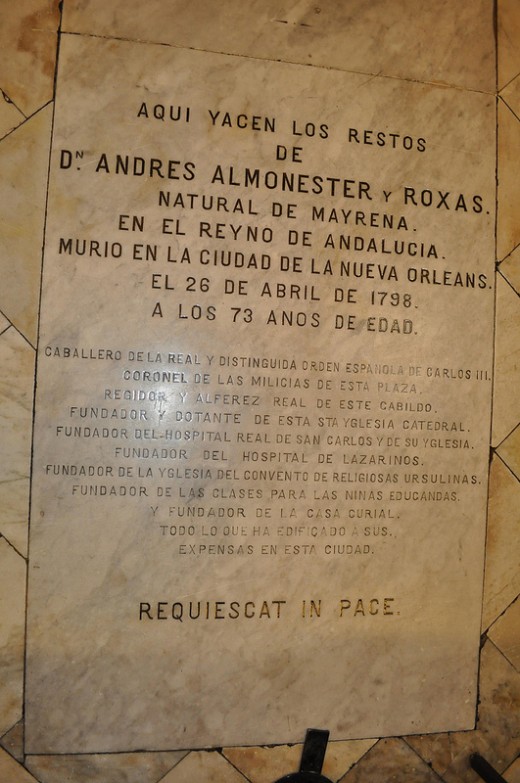

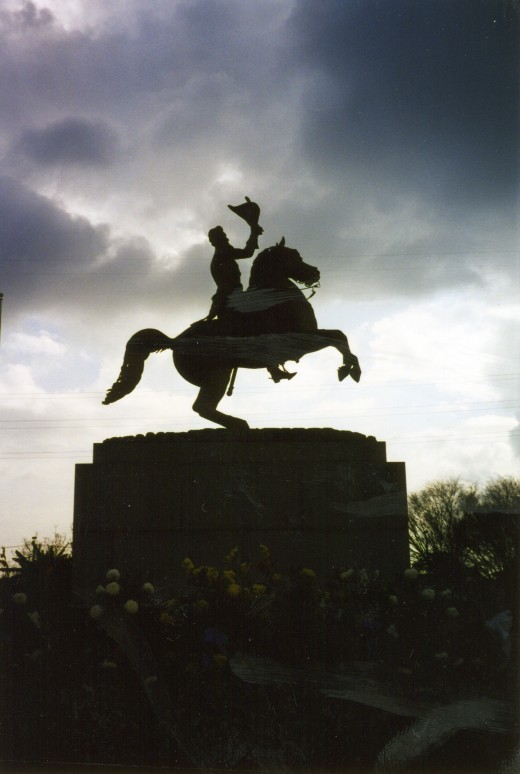
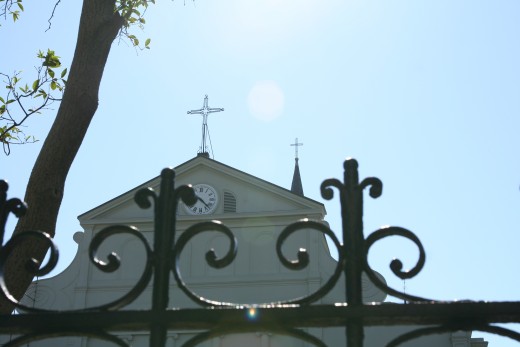

Almonester's Daughter Returns
At age 70, Andres Almonester y Roxas had a daughter who would become one of the city's most beloved figures,
Only 3 when her father died, Micaela Almonester was married off at age 15 to a cousin who lived outside of Paris. Her mother thought she was improving her daughter's standing in society, not knowing the Pontalba family had fallen on hard times and were just trying to get their hands on her family's fortune.
Her $40,000 dowry was worth over $1.7million in today's dollars, but her father-in-law wanted her family's entire fortune all and immediately set to work. Her husband was weak and effeminate, spending as little time with his wife as possible, leaving her with his manipulative father, the Baron Pontalba, instead.
Micaela's life was miserable and she decided to fight back, seeking a legal separation from her husband and control of her own assets- unheard of in the 1830s. It infuriated the Baron until he lost control in 1834, shooting her four times in the chest.
Micaela surviving his attack was one indignity too many, and the Baron retreated to his office shooting himself with his own pistols.
Ironically, upon his death his son Xavier inherited the title, and Micaela was henceforth known as the Baroness Pontalba.
She eventually won her fortune back, was legally separated and returned to New Orleans where she found her properties in disrepair. She set about getting the permits and permissions to not only build two grand sets of apartments but change the plaza forever.
The area in front of the Cathedral (called the Place d'Armes) had always been a military training ground, public square and execution ground. When the dirt wasn't packed down, hard and uninviting, it was muddy and even less inviting- this was not a place you took the family for a picnic and relaxing afternoon.
The Baroness had a vision and set about creating a grand formal garden like those in Paris. The park was renamed Jackson Square in honor of Andrew Jackson, widely credited in saving the city from the British during the War of 1812. It is his statue that rears up in front of the Cathedral.
It took years and more than a little arm twisting around town, but her buildings live on, now protected and on the National Register of Historic Places.
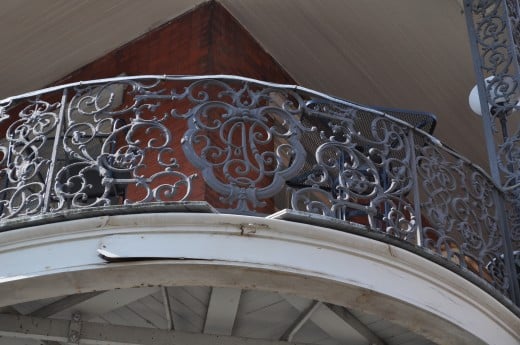
Things that came before...
There are no reminders of the Square's strange and bloody history- and what I've shared is just a start. For three hundred years this has been the heart of the city- protests, murders, attempted coups, and ghost stories abound.
These days sidewalk psychics set up tables and artists hang their wares on the fence. Tour guides call out while mules pull carriages in front of the park. Over the holidays there's a huge Christmas tree and caroling. During French Quarter Fest there's free music and during our annual Tennessee Williams festival dozens of Stanley Kowalskis line up for the chance to scream up to the balconies.
It's a lovely place to sit and relax,but if you have the chance to visit, give a thought to those who worked, plotted and schemed to bring it all together.

